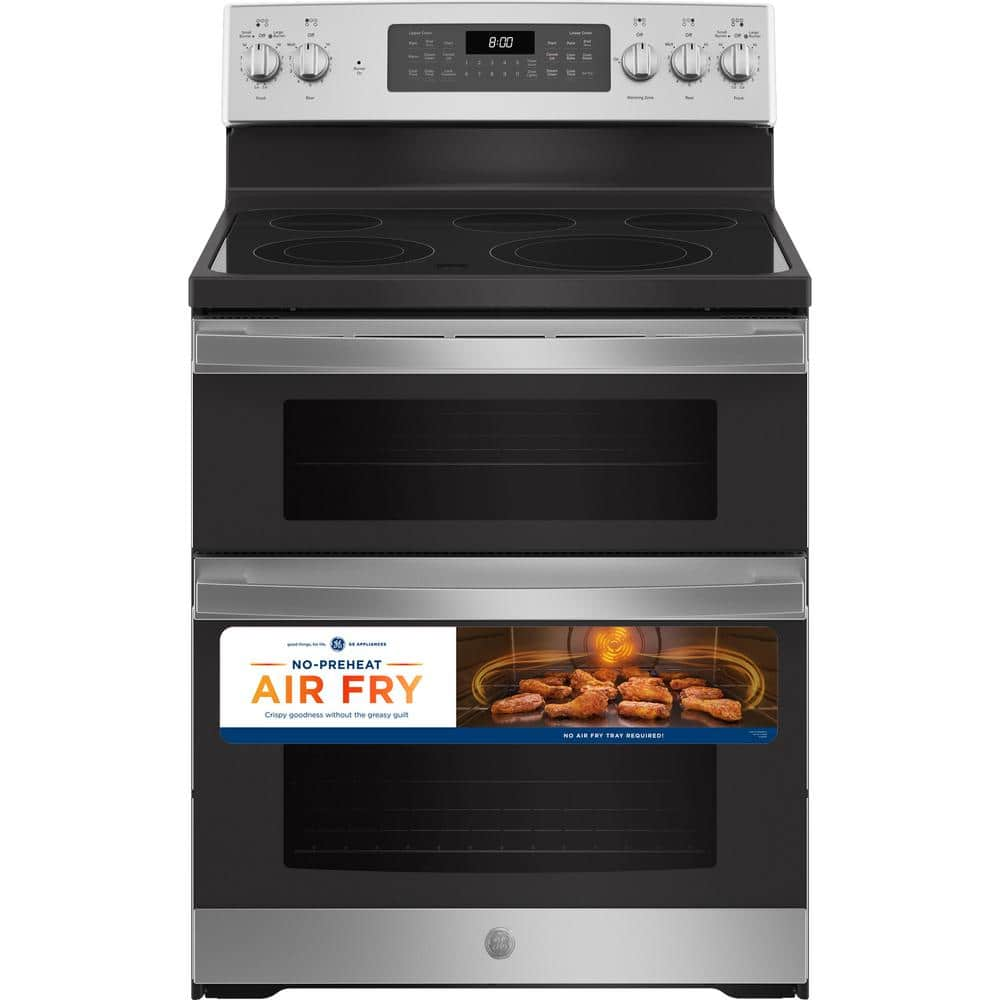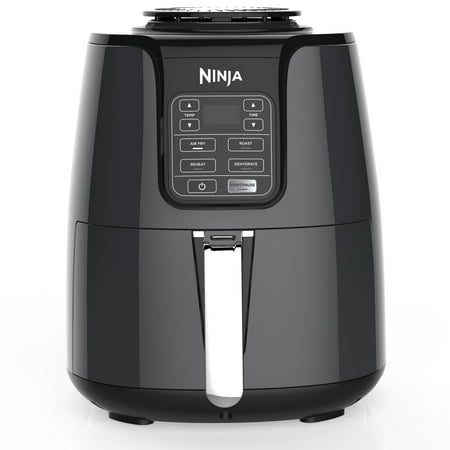GE 30 in. 6.6 cu. ft. Double Oven Electric Range with Steam-Cleaning Convection Oven in Stainless Steel
Convection includes a rear fan for faster, more even baking. 12″/9″ power boil element produces rapid, powerful heat. Steam clean oven cleans the oven cavity without scrubbing.
At GE Appliances, we bring good things to life, by designing and building the world’s best appliances. Our goal is to help people improve their lives at home by providing quality appliances that were made for real life. Whether it’s enjoying the tradition of making meals from scratch or tackling a mountain of muddy jeans and soccer jerseys, GE Appliances are crafted to support any and every task in the home.
- Convection – This convection oven cooks and browns more evenly, using a rear fan to circulate hot air
- 12 in./9 in. Power Boil Element – A power boiler produces concentrated heat for rapid boiling in a flexible 12 in./9 in. burner size, so you spend less time waiting and more time cooking
- 9 in./6 in. Power Boil Element – A power boiler produces concentrated heat for rapid boiling in a flexible 9 in./6 in. burner size, so you spend less time waiting and more time cooking
- Warming Mode – A warming mode that lets you to serve dishes at the right time and temperature
- Fifth Element Warming Zone – A convenient low-heat warming zone provides even temperature control for foods on the cooktop
- Steam Clean – A steam cleaning option cleans the oven cavity in a 30-minute cycle with less odor and heat
- Wall-to-Wall Bake Element – An 8-pass bake element in the upper oven heats a large cooking area evenly
- Fast Preheat – The upper oven preheats quickly and evenly with a speedy preheat feature
- Large Capacity Double Oven – This large double-oven lets you cook multiple items at the same time thanks to its 6.6 cu. ft. total capacity
- Limited 1-year entire appliance warranty
- Aproximate Dimensions (in.) – 47 in. H x 29-7/8 in. W x 28-1/4 in. D
Additional information
| Depth With Door(s) Open 90 Degrees (In.) | 45 |
|---|---|
| Element No.1 Size (In.) | 12 |
| Element No.2 Size (In.) | 6 |
| Element No.3 Size (In.) | 9 |
| Element No.4 Size (In.) | 6 |
| Element No.5 Size (In.) | 6 |
| Lower Oven Interior Depth x Height x Width (in) | 18.25 x 17.5 x 24 |
| Product Depth x Height x Width (in) | 28.25 x 47 x 29.88 |
| Range Size (Width) (in) | 30 |
| Upper Oven Interior Depth x Height x Width (in) | 18.25 x 8.88 x 24 |
| Certifications and Listings | UL Listed |
| Manufacturer Warranty | Limited 1 year entire appliance warranty |






by Nanny
I use my small oven more love it
by Patricia
love the air fryer feature.
by Lauriea
After another brand oven failed after 14 months, we couldn’t be happier to have the GE double oven. We look forward to many great family meals in our new oven!
by Jeano
Look ok so far. I know it a good quality coming from GE.
by Jessica
It exceeded my expectations! The double oven makes it easy to cook at two different settings at the same time. The built-in air fryer does a great job of cooking the food evenly. Super happy with my purchase.
by Amy
Looks awesome! Lots of great features and easy to use.
by Tazzie
so far it is great looked at floor model and did side by side to another brand. their ovens did not have bottom heat elements . number 1 reason to go with the GE.
by Miser
we like the different features that each appliance has, the dishwasher is quiet, stove work very well love the part on the refrigerator that fill the cup up by it self.
by Nicole
So far i am really liking the oven. It is taking awhile for the smell to go away when using but aside from that, it’s great so far!